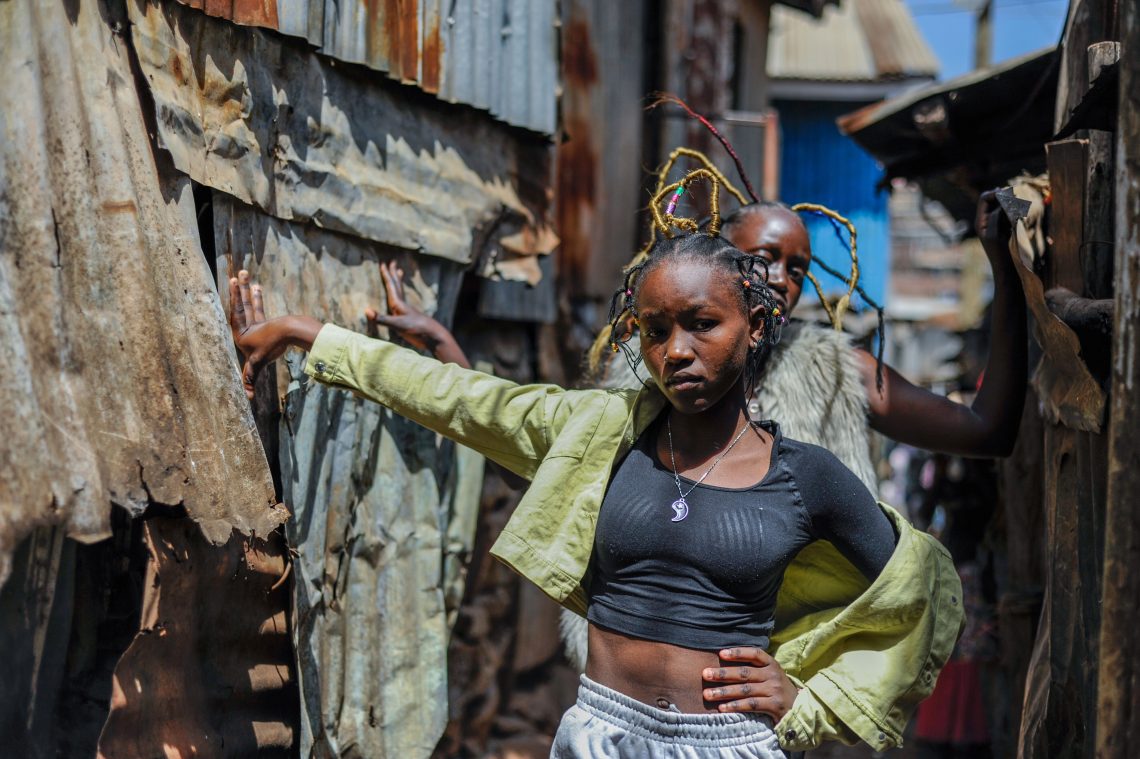Dysfunction and disillusionment in Kenya
Young Kenyans expect a complete structural overhaul, but President Ruto has little room for maneuver.

In a nutshell
- Protests in Kenya erupted over new taxes, escalating into broader demands
- The country’s economic challenges include a staggering $80 billion debt
- The Ruto administration is a key ally for both Europe and the U.S.
Protests in Kenya began on June 18, triggered by the country’s treasury announcing a set of revenue-raising measures. The new levies included a 16 percent sales tax on bread, a 25 percent duty on cooking oil and the introduction of an “eco tax” on several basic products. The measures were approved in the Kenyan National Assembly on June 20.
Five days later, the protests turned violent, with some protesters invading the parliament. The police opened fire on the crowds, and the military was deployed to subdue the unrest. When the protests began to spread across the entire country, President William Ruto dismissed his cabinet and promised to announce new measures within 90 days, including amendments to the Public Finance Management Act and anti-corruption initiatives.
The current wave of protests is a symptom of Kenya’s major political and economic dysfunctions, inherited from the previous administration, as well as of President Ruto’s failure to address pressing issues, most notably a staggering debt of $80 billion, which consumes 65 percent of the country’s revenue.
The demonstrations had a ripple effect across the continent. Similar movements, blending online activism with street demonstrations, have emerged in Uganda, led by Bobi Wine with slogans like #March2Parliament and #StopCorruption, and in Nigeria, where President Bola Ahmed Tinubu has tried to pour water on the fire by introducing measures such as a $70 million youth investment fund. With economic stagnation, poor governance and rapid urbanization, these protest cycles are likely to become more common across Africa, where half the population is expected to live in cities by 2050.
Triggers and consequences
The recent wave of protests in Kenya, as well as in Nigeria and Uganda, were fueled by Africa’s rapid urbanization and its specific demographics – 70 percent of sub-Saharan Africa’s population is under 30. Urban youth, struggling with unemployment and inflation, are deeply dissatisfied. There is a wide gap between what people expect from politics and what they are being delivered. The current political system remains in place by appealing to specific ethnic groups and co-opting opposition parties.
The events in Kenya also show the cycle of civil mobilization and government repression often seen in similar protests in other African countries. While the demonstrations initially aimed simply to stop the finance bill, the growing level of repression – resulting in an estimated 50 deaths so far – broadened the protesters’ demands. They eventually began calling for President Ruto’s resignation and action against police brutality.
Facts & figures
Tax-related protests in Kenya, June 12-July 18, 2024

Despite the president dismissing his cabinet and announcing major reforms, the protesters have not stood down. Instability is likely to persist, driven by both the strengths and weaknesses of this protest movement.
One key strength of this drive is the use of social media to organize political dissent. Hashtags like #REJECTFINANCEBILL2024 and #RUTOMUSTGO have played a significant role in mobilizing supporters. Another important strength is the frequency, size and reach of the demonstrations. Protests have been ongoing for several weeks, with Nairobi as the main hub, while large-scale demonstrations have also taken place in 35 of Kenya’s 42 counties. Achieving nationwide participation, like the protests that led to the ousting of President Omar al-Bashir in Sudan, shows that such movements can overcome partisan and ethnic divisions.
Protesters achieved a significant victory when President Ruto announced the withdrawal of the finance bill on June 26, dismissed his cabinet and pledged to form a “broad-based government.” However, the lack of clear leadership within the protest movement, along with its limited ties to established political actors, and President Ruto’s low motivation to implement substantial reforms, indicate that these developments are likely to be largely symbolic, with the potential for major reforms remaining limited.
Beholden to China
The massive debt inherited from the administration of former president Uhuru Kenyatta (2013-2022), in which Mr. Ruto served as vice president, has put Kenya between a rock and a hard place with ever-larger debt servicing obligations to China. The debt-to-GDP ratio nearly doubled over the last decade – from 41 percent in 2014 to 78 percent in 2024 – driven by megaprojects like the Standard Gauge Railway or the Nairobi Expressway, both financed by China’s Belt and Road Initiative.
As Nairobi’s default risks grew, raising additional public revenue became essential to securing a deal with the IMF amid a challenging global economic environment. Last year, a finance bill that doubled the value added tax on fuel and introduced a housing tax also sparked widespread protests. And now, public discontent – particularly among urban youth who are highly affected by political and economic failures such as corruption, cronyism, unemployment, and the removal of subsidies and tax hikes – poses an existential threat to the current administration.
Ruto’s position
Halfway through his term, President Ruto has limited room to shift direction, but he does still hold some key advantages.
The first is that, amid growing turmoil in the Horn of Africa and rising hostility toward Western countries in the Sahel, Kenya has solidified its position as a key United States and European Union ally. In December 2023, President Ruto’s administration and the EU signed an Economic Partnership Agreement granting Kenyan products duty-free and quota-free access to European markets in exchange for gradual tariff reductions on European goods.
Six months before that, Kenya and the U.S. launched a Strategic Trade and Investment Partnership, which, despite some downgrades during negotiations, provides crucial support. This is a follow-up to the African Growth and Opportunity Act (AGOA), which has greatly benefited Kenyan manufacturers and exporters but is set to expire in 2025. More recently, in May 2024, President Ruto became the first African president in over 15 years to make an official visit to the U.S., where he and President Biden announced the Nairobi-Washington Vision. Kenya was granted Major Non-NATO Ally status, offering preferential access to U.S. training and military equipment.
More by Teresa Nogueira Pinto
- The South African coalition government’s daunting agenda
- Africa shows ESG is near an adapt-or-die moment
- Kagame still holds Rwanda’s consensus together
Beyond its Western partnerships, Kenya also signed a comprehensive economic agreement with the United Arab Emirates in February, focusing on food production, mining and logistics.
Another element bolstering Mr. Ruto’s current trajectory is that Kenya is seen by many investors as a gateway to the African market because of its relatively solid legal environment, especially since the approval of the 2010 constitution. Being a regional economic power, Kenya is integrated within the East African Community, the Common Market for Eastern and Southern Africa, and is well-positioned to reap the benefits of the AfCFTA.
Strategic sectors like cleantech, fintech or e-commerce are also often cited as promising in Kenya. The country, which was a pioneer in mobile money with the launch of the M-Pesa system in 2007, has tried to position itself as a digital hub in Africa. However, the potential of the “Silicon Savannah” has been curtailed by rising regulations and taxes on digital services.
Scenarios
Most likely: Deterioration of the political and economic outlook
The Kenyan Court of Appeal recently declared the 2023 finance bill unconstitutional, citing flaws in the approval process, particularly the failure to consider public opinion. This decision further limits the government’s ability to finance the national budget, which already faces a $1.6 billion shortfall. Expectations that coming months will bring more political uncertainty, coupled with steadily worsening regional security, may further strain the country’s economic outlook.
Reforms to change the economic policies that led to the current situation are unlikely. First, with elections in two years and the financial strain of growing debts to China and international lenders, the government lacks both the time and the incentive to rethink its strategy. Second, there is no strong opposition: Some key figures have been co-opted by the government, while others remain focused on regional and ethnic divisions.
Widespread disillusionment with institutional politics, particularly among young city-dwellers, suggests that many will continue to turn to unconventional and extra-institutional methods of protest and participation. These factors make the emergence of a reformist political movement ahead of the 2027 general elections unlikely, though not entirely impossible.
Protests in Kenya could also lead to a shift in the country’s international alignment. President Ruto has openly criticized the U.S.-based Ford Foundation, accusing it of sponsoring the protests. Tensions are further heightened by the involvement of Kenyan police in the U.S.-backed intervention in Haiti, which has faced legal challenges in Kenyan courts.
Although the U.S. has long been a key ally of Nairobi, Washington’s attention is currently, and will likely remain, focused on domestic issues, regardless of the outcome of the November U.S. presidential elections. Africa, and specifically Kenya, is unlikely to be a priority.
In this context, while less certain, Kenya might consider deepening its “look east” partnerships. China, Kenya’s largest creditor, holds around two-thirds of the country’s bilateral debt, and Japan has recently emerged as another important source of financing. Given the ongoing geopolitical shifts in West Africa, the Sahel and North Africa, a deterioration in U.S.-Kenyan relations could be a setback for Washington.
Less likely: Reform
A second, less likely scenario is the possibility of progressive reform in the second half of President Ruto’s term in office. He is expected to propose amendments to the Public Finance Management Act, along with a series of anti-corruption measures by the end of October. Although he has pledged to “slay the dragon of corruption,” a key obstacle to growth and a major concern for Kenyans, these efforts may prove largely symbolic, as seen in other countries facing similar challenges, particularly in the absence of any significant leadership changes.
For industry-specific scenarios and bespoke geopolitical intelligence, contact us and we will provide you with more information about our advisory services.









